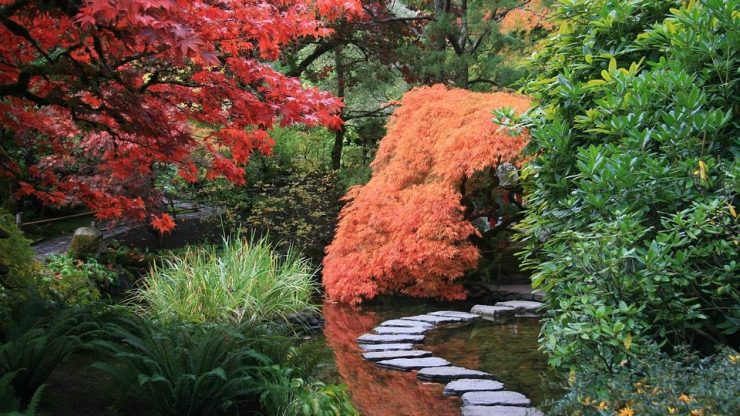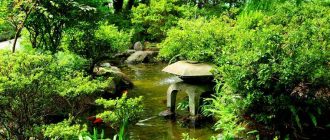Japanese gardens have always encouraged the use of materials from nature. In this respect the modern Japanese garden is no different from the classic gardens found in Japanese history. The purpose of a Japanese garden is to create a tranquil environment for relaxation and a meditative kick back time.
The fundamental elements that constitute a modern Japanese garden include water, sand, stones, gravel, ornaments, borrowed scenery and architectural inputs. The principle of scaling is handled with extreme care when it comes to composing a Japanese garden. Nothing can disturb the harmony in relation to the over all size of the garden with the scale of the items present within that space.
Japanese Garden Stones
The laying out of a modern Japanese garden usually begins with the stones. This is because they are the main element of the entire garden. The stones are always used in odd numbers as has been the Japanese tradition for ages. They can either be placed randomly or grouped in triangular shapes.
Stones can be used for different purposes within the modern Japanese garden. They may be used for stepping stones that provide an interesting view point to the observer. Alternatively they can be arranged in a manner so as to suggest a mountain or a hill. The stone path way that leads the way through the garden is taken as a symbolic representation of man’s journey through life.
There is a lot that can be done regarding the placement of the stones. One can deliberately create a path that has its ups and downs and slows down the traveling at certain points that demand a closer observation. The use of stones to represent human emotions or natural landmarks such as hills and mountains is a common feature in the modern Japanese garden.
Japanese Water Features
The use of water features is equally as important in a modern Japanese garden. But naturally water symbolizes purity which is felt in an overwhelming manner through a Japanese garden. The use of water in the form of ponds, streams and waterfalls is characteristic of Japanese gardens. Never will you find Japanese gardens with water fountains.
Another interesting way in which Japanese gardens seek to represent water without actually making use of water is through sand. Basically they lay out a bed of sand or gravel and rake it in order to create a pattern that suggests rippling water. This different technique has a great visual appeal and tends to be soothing to the observing eye.
One can incorporate the different elements from the various styles that form the library of Japanese gardens. The list includes Zen gardens also known as sand gardens, the Japanese tea garden, courtyard garden, stroll garden or the all time classic pond and island style garden.
With regards to the ornaments that are used to decorate the Japanese garden stone lanterns are a must have. They are strategically placed close to the pond as this positioning is meant to have a deep symbolic meaning as well. Empty space also known as negative space is also a key designing element in the modern Japanese garden which will never appear to be overcrowded.





